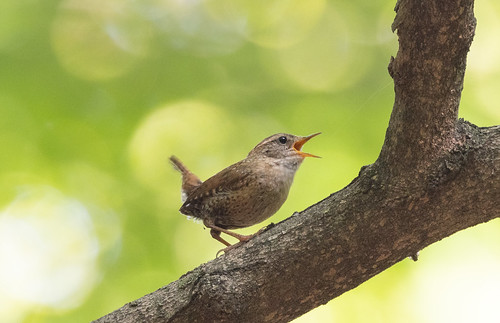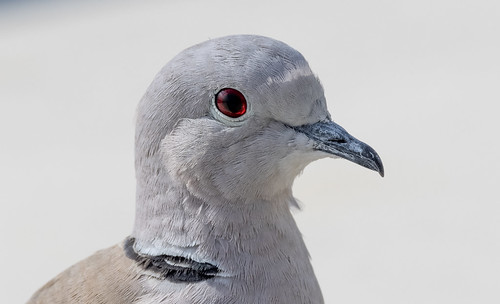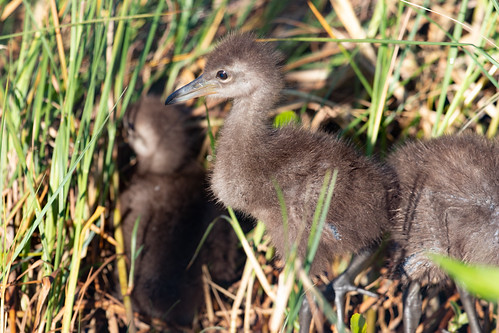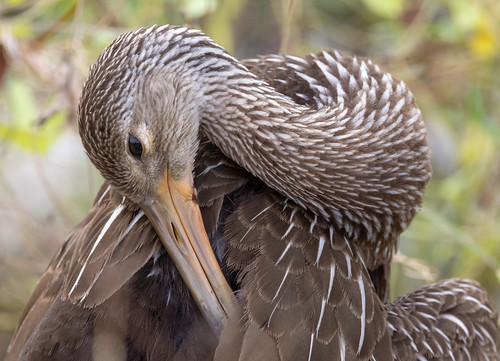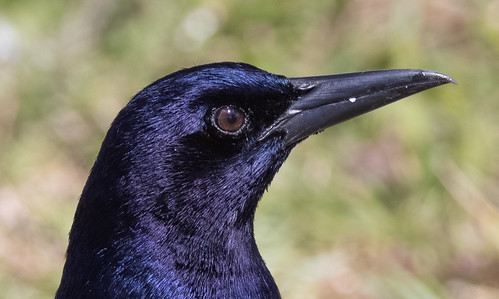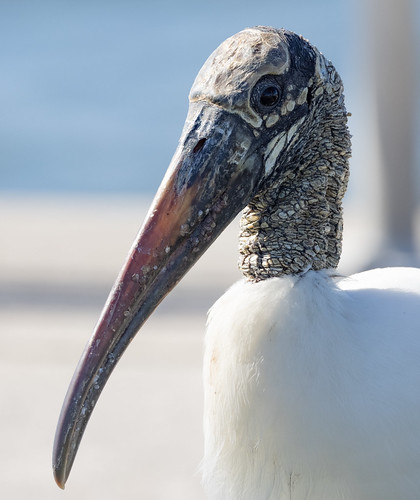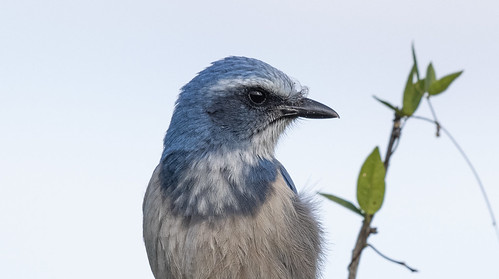Covid-19 has made the Erickson household extremely careful: Russ and I are in the vulnerable age category and I’ve had two heart attacks. Our daughter Katie was pregnant from the start of the pandemic until August 2020, and our baby grandson Walter is still too little to be vaccinated. But I did take two road trips this year. After discovering that Rib Mountain State Park in Wausau happens to be the northernmost place in Wisconsin where Acadian Flycatchers breed, I drove to Rhinelander, Wisconsin, with my dog Pip on the Fourth of July weekend. En route, I saw a lovely family group of Trumpeter Swans at the Powell Marsh in Manitowish Waters. I spent one morning at Rib Mountain. It was the end of the singing season, but I heard and got a glimpse at one Acadian Flycatcher, heard several Wood Thrushes, and spent several lovely minutes with a nearby Winter Wren.
Russ and I hadn't seen our son Joe since 2019, so we drove to Orlando, Florida for his birthday in October two weeks after getting our booster shots. We didn't go to any theme parks or indoor anything. We hit Brinson Park in Kissimmee three times. It’s very urban, the best paths right along a noisy highway and a residential neighborhood, but Sandhill Cranes in perfect light were feeding in people’s front yards.
I also got some of my best photos ever of Eurasian Collared-Doves on streetlights and sign posts.
The magnets that pull me to Brinson Park over and over are Limpkins and Snail Kites.
When I started birding, both species were extremely rare, the U.S. populations considered threatened or even endangered. Both species depended on apple snails native to the sawgrass in the Everglades. The damage that development and Florida’s sugar industry have done to the Everglades habitat has pretty much wiped out the snails as well as lots of other species. But now a destructive, invasive apple snail that escaped from the pet industry has become established throughout the state, and the two birds designed to extract large snails from their shells are thriving. Last time we were in Florida in spring, we got photos of baby Limpkins.
This time, I wondered which of the dozens we saw were those babies now grown up. Limpkins belong to the same order as cranes, and unlike a lot of birds that are disappearing in Florida, both Sandhill Cranes and Limpkins have somehow adapted to the over-developed Florida environment.
We went to Titusville twice, picking up food at my favorite Florida restaurant, Dixie Crossroads, to eat in Parrish Park. Sociable Ruddy Turnstones, Laughing Gulls, Fish Crows, Boat-tailed Grackles, and one Wood Stork spend their days mooching from picnickers and anglers, some providing lovely photo ops.
As much as I love seeing waders and waterfowl at Merritt Island National Wildlife Refuge, my biggest reason for going to there is to see Florida Scrub-Jays. This trip we got skunked on our first visit, but second time around, after a long hike, we finally saw a pair and I got a few decent photos.
One of the best days of the trip was when we met a dear longtime friend of mine, Liz, at her place in Tavares. Gorgeous Black-bellied Whistling-Ducks feed in her backyard, giving me my best looks ever.
Then Liz took us to her own favorite spot—one I’d never been to before—Lake Apopka Wildlife Drive, for some splendid birding and photography. I had a slight chance for a lifer—Lake Apopka is at about the northern extreme of the Florida range of the Purple Swamphen, a non-native species that escaped from captivity and is now increasing in South Florida. We didn’t find any—Liz said there’s only one spot along the drive where they can be found—but enjoyed lots of herons, egrets, and alligators.
The two trips seriously augmented my 2021 list, giving me almost a hundred more species than I saw in 2020, and it was lovely to spend a little time away from home, but oddly enough, my four very favorite bird encounters of 2021, which are now all in the Top Ten bird encounters of my entire life, took place in my own backyard. I'll be devoting my last blog posts of 2021 to them.

